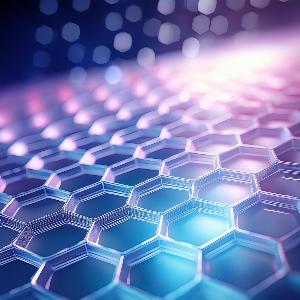Nanophotonics of van der Waals Materials
Merging van der Waals (vdW) materials and spectrally selective metasurfaces for strong polaritonic coupling and quantum light generation.
Merging van der Waals (vdW) materials and spectrally selective metasurfaces for strong polaritonic coupling and quantum light generation.

Van der Waals (vdW) materials are crystalline solids composed of atomically thick layers that are tighly bound in-plane, but experience only weak vdW forces in the out-of-plane stacking direction. This unique structure gives them extraordinary mechanical, electronic, and optical properties even when used as single layers, launching breaktroughs in a variety of fields (Science 2016).
Their atomically thin nature, combined with their diverse range of optical properties, makes them ideal for the creation of novel photonic devices with enhanced functionality and performance (Laser Photonics Rev. 2023). In our research, we merge vdW materials with metasurfaces to improve their coupling efficiency with light and realize advances in polaritonic coupling and quantum light generation.
One of the most remarkable features of vdW materials is their ability to be stacked and combined in various configurations, creating artificial heterostructures with tailored properties. This deterministic assembly approach offers unprecedented flexibility in designing and fabricating complex nanophotonic devices with functionalities that are beyond the reach of conventional materials. Below are some of our recent results on nanophotonic systems based on vdW materials.
We introduced the concept of van der Waals heterostructure metasurfaces (vdW-HM), which leverages precisely nanopatterned stacks of vdW materials to create ultrathin optical cavities that significantly boost light-matter interactions. We experimentally realized a vdW-HM from a WS2 monolayer encapsulated in hexagonal boron nitride and demonstrated room-temperature strong coupling and polaritonic luminescence. Notably, we observed a saturation of the strong-coupling regime at remarkably low fluences, opening doors to novel ultrathin and highly efficient optical devices with atomic-scale precision and control arXiv:2407.16480 (2024-07).
We successfully integrated optically active spin defects within hexagonal boron nitride (hBN) metasurfaces, achieving resonant coupling with high-Q factor BIC-driven resonances. This monolithic integration led to a remarkable 25-fold increase in photoluminescence intensity, accompanied by significant spectral narrowing and improved spin-readout efficiency. Our findings highlight the potential of hBN metasurfaces for enhancing the performance of spin-defect-based quantum technologies, paving the way for advanced applications in quantum optics, imaging, and sensing Nat. Commun. 15, 2008 (2024-03).
We demonstrated strong light-matter coupling in a self-hybridized metasurface platform composed entirely of nanostructured bulk tungsten disulfide (WS2). By tuning the BIC resonances across the exciton resonance in WS2, we achieved strong coupling, evidenced by an anticrossing pattern and a Rabi splitting of 116 meV. Notably, the coupling strength could be controlled by varying the radiative Q factor of the BIC, providing a new mechanism for tailoring light-matter interactions in nanophotonic devices Nat. Mater. 22, 970-976 (2023-06).
We realized a new class of BIC-driven metasurfaces where the resonators are entirely composed of hexagonal boron nitride (hBN) and showed that they can achieve high-quality optical resonances across the entire visible spectrum, overcoming the limitations of traditional materials. We further demonstrated the potential of the hBN BIC metasurfaces for enhancing light-matter interactions, specifically for boosting third harmonic generation Adv. Mat. 35, 2209688 (2022).
Take a look at the full list of publications here.